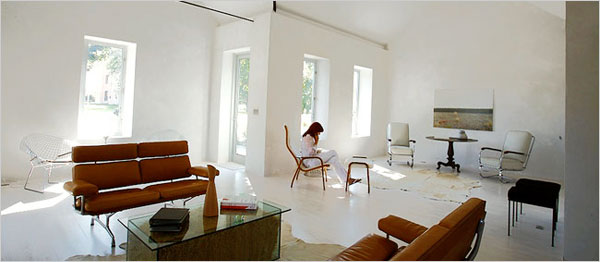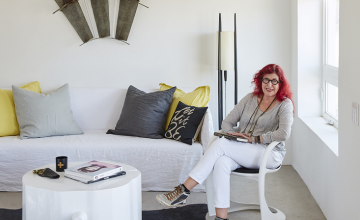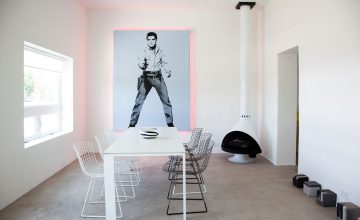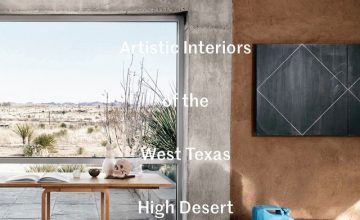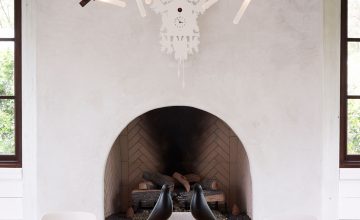Marfa, Tex.
WHEN you build a house from the ground up, you know what you’re going to get, said Barbara Hill, an interior designer who recently renovated a small house in the center of this tiny town in southwest Texas. But when you renovate, she said, it’s like a train with no brakes. Once it gets going, there’s nothing there to stop it.
As the lilt in her voice makes clear, Ms. Hill finds both railroads and renovations intoxicating. When freight trains come speeding through Marfa, just a few blocks from her house, she stops whatever she?s doing to listen and look. Their rumble and whistle, she said, are a passionate sound. The repetitive shapes of the boxcars suggest a Donald Judd sculpture moving through the desert.
It was Judd who in the 70’s and 80’s turned Marfa into an art pilgrimage site. In addition to creating vast sculptural installations in the landscape, he turned more than a dozen unused buildings into spare galleries for even sparer art.
Ms. Hill’s house is as minimal as any work by Judd. After stabilizing the structure with steel beams, one nearly 50 feet long, she was able to remove most of its interior walls. The remaining surfaces are covered in a white plaster with so much depth it seems to emit light; objects are placed with curatorial rigor. The effect is of overwhelming serenity, as if everything is precisely where it should be.
So it?s natural for visitors to ask Ms. Hill if she was influenced by Judd, who died in 1994. Ms. Hill, a former beauty queen (she was Miss Texas of 1956) with perfect manners, answers carefully. Though she doesn?t want to diminish Judd’s importance, she makes clear that she came to minimalism by a different route.
In fact, Ms. Hill was a minimalist before Judd set foot in Marfa. In 1971 she opened the Cusack Gallery in Houston to show the work of artists like Sol LeWitt, Robert Mangold and Daniel Buren, who at the time were struggling. She and her four children lived above and behind the gallery. “You could smell spaghetti when you came to see the art,” she said.

